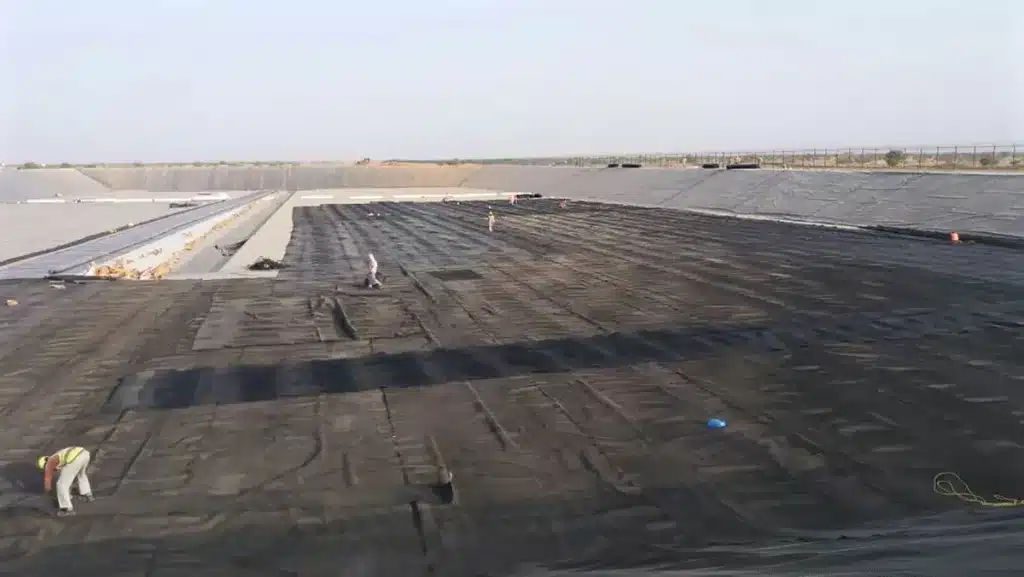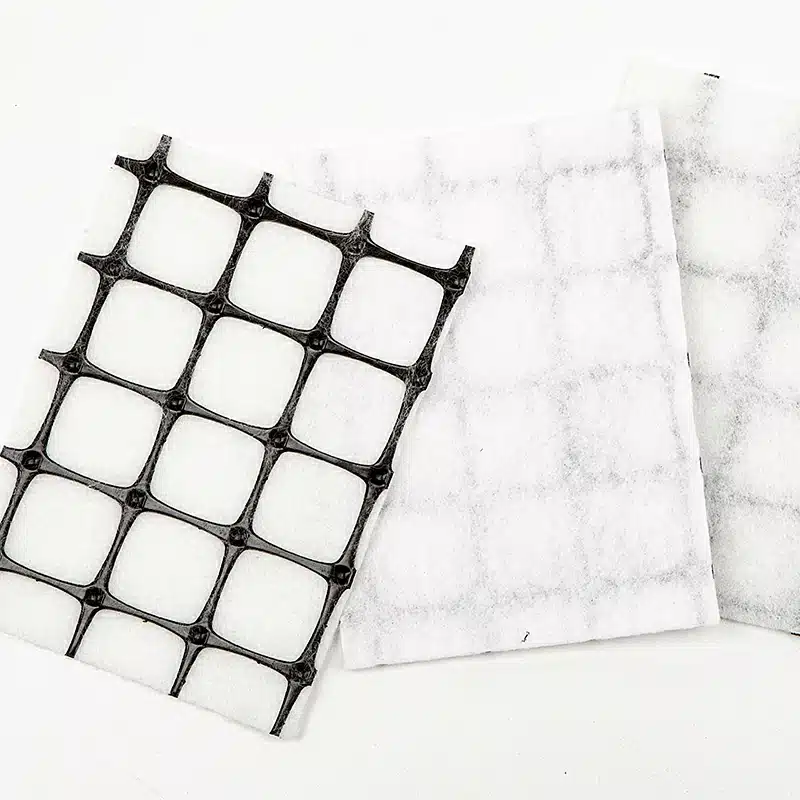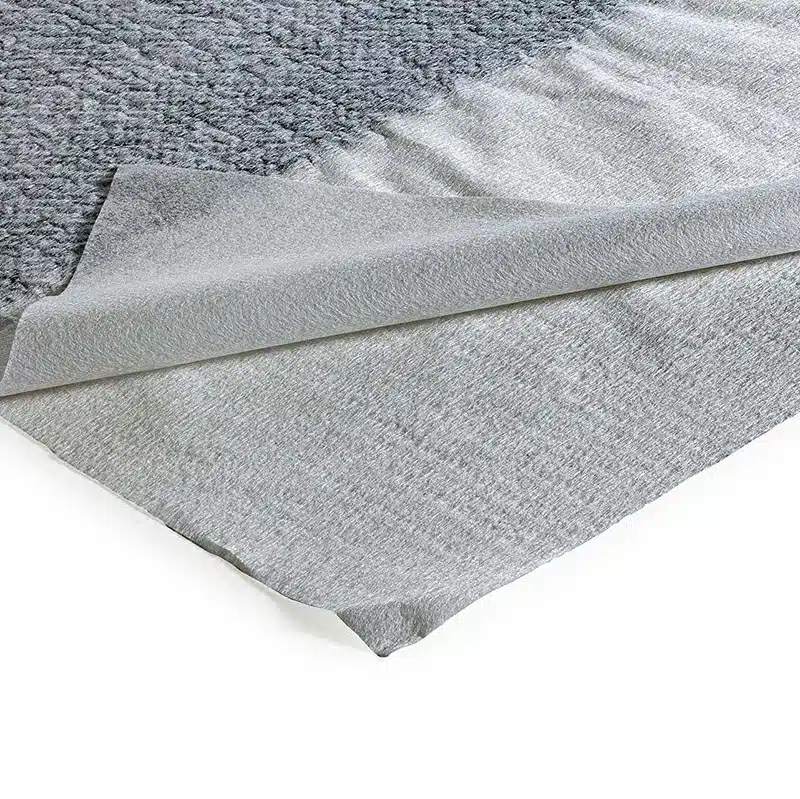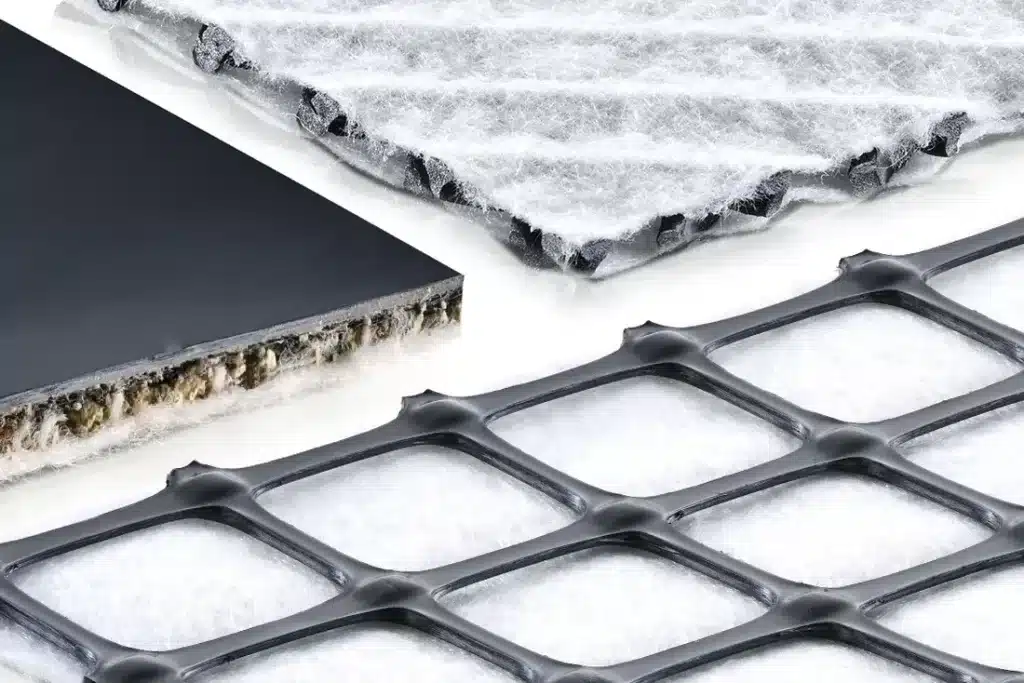+86-159 9860 6917
info@geofantex.com
geofantex@gmail.com
+86-400-8266163-44899
Laying geocomposite correctly is essential for efficient drainage and soil stabilization. In this article, we’ll guide you through the process step by step. We’ll also answer key questions about geocomposite, including its composition, thickness, and its differences from geotextile. Let’s dive in!

What is the difference between geotextile and geocomposite?
The key difference between geotextile and geocomposite lies in their composition and functionality.
- Geotextile is a single-layer permeable fabric made from synthetic fibers like polypropylene or polyester. It is primarily used for functions such as separation, filtration, drainage, reinforcement, and erosion control in soil and water-related applications.
- Geocomposite, on the other hand, is a multi-layered system that combines geotextiles with other geosynthetic materials such as geonets, geomembranes, or drainage cores. This combination allows geocomposites to perform multiple functions simultaneously—such as filtration and drainage or reinforcement and barrier protection—making them suitable for more complex engineering challenges.
In essence, geotextiles are standalone fabrics, while geocomposites are engineered combinations designed to enhance performance in specific applications.
How thick is the geocomposite drainage layer?
The thickness of a geocomposite drainage layer typically ranges from 4 mm to 10 mm, but it can vary depending on the design requirements of the project.
- Standard applications: Most drainage geocomposites used in roadways, retaining walls, and landfills fall within the 5–7 mm range, providing reliable flow capacity without excessive material use.
- High-flow or heavy-load conditions: In areas requiring rapid water discharge—such as tunnel linings, bridge abutments, or steep slopes—thicker drainage cores (8–10 mm or more) may be specified to ensure durability and performance.
- Selection factors: Soil permeability, hydraulic gradients, and anticipated loads are key in determining the required thickness. The higher the pressure and expected water flow, the thicker the geocomposite should be.
The thickness of a geocomposite drainage layer is not one-size-fits-all—it should be engineered to balance drainage capacity, soil conditions, and structural loads for long-term efficiency.
What is the geocomposite drainage layer?
A geocomposite drainage layer is a modern substitute for traditional stone and gravel drainage layers. It provides drainage, filtration, separation, and barrier functions in a compact, engineered system. Key aspects include:
- Functionality: the geocomposite replaces thick gravel/sand layers while providing equivalent or better water flow and filtration performance
- Core Material: constructed from HDPE, PP, or natural fibers, the core transports water efficiently
- Geotextile Layer: bonded to the core, it prevents soil particles from clogging the drainage system
- Applications: widely used in landfills, roadways, retaining walls, tunnels, and slope drainage
- Advantages: reduces excavation depth, transportation cost, and installation time compared with traditional drainage layers
Geocomposite drainage layers offer a cost-effective, high-performance alternative to bulky aggregate drains, improving construction efficiency and long-term drainage performance.

What is a geocomposite made of?
Geocomposites typically consist of two key components: a geotextile layer and a drainage core. The geotextile layer is typically crafted from synthetic materials like polypropylene or polyester, chosen for their durability and resistance to chemical and biological degradation. The drainage core can be constructed from various materials, including HDPE, PP, natural fibers, and sometimes geotextiles, geogrids, geonets, and/or geomembranes.
Steps to Lay Geocomposite:
- Site Preparation: Evaluate the site and excavate if necessary, ensuring the correct slope for drainage.
- Geotextile Installation (Optional): Lay geotextile fabric at the excavation’s base to prevent soil fines from blocking the drainage system.
- Geocomposite Placement: Unroll the geocomposite material over the prepared area, ensuring it covers the entire drainage-required surface.
- Connection and Overlap: Overlap geocomposite rolls by at least 12 inches (30 cm) and secure them using recommended fastening methods.
By following these steps and understanding the key characteristics of geocomposite, you can successfully lay geocomposite for various construction and civil engineering applications. It’s important to tailor the process to your specific project requirements for the best results.



Get Free Sample
We’ll respond as soon as possible(within 12 hours)





















